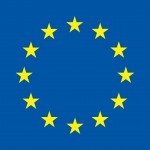Objectives:
- To relate internal and external exposome to health outcomes
- To identify biomarkers of exposure and effects at the individual level
Description of work and role of partners:
This work package will include a) identification of exposure biomarker profiles/biological responses/health outcomes that differ between EU regions, countries, age groups, life style parameters, dietary habits, SES status; b) examination of links between exposure data and effect data/health outcomes; and c) identification of exposure biomarker profiles/biological responses that are differentially expressed in the health examination survey population, thus linking exposure data with health outcomes at the individual level across the EU.
Task 13.1 Identification and clustering of data (UPMC, VTT, CSIC, CNR, IDMEC-FEUP, UC)
The data necessary for comprehensive study of the associations between environmental exposures and health perturbations including early biological events that can be associated to disease phenotypes as observed in the populations studied in stream 5 will be collected and clustered after preliminary statistical analysis to remove any potential bias in either the exposure data collection or the effect observations. The datasets will be controlled for completeness and robustness, and will be clustered in commensurate groups to facilitate their statistical treatment (to be done in Task 13.1). This task is critical due to the very large number of data of different attributes that comprise the input to the association models developed in Task 13.2.
Task 13.2 Environment-wide associations linking environmental exposures to health outcomes (AUTH, UPMC, ISS, VTT, CSIC, CNR, UC)
Internal doses will be coupled to health impacts on the local population through advanced statistical methods to derive the dose–response functions which account for differences in exposure patterns, susceptibility differences and inter-individual variation in health response. The approach starts from the biomarker values measured in different biological matrices (urine and peripheral blood) to estimate through the application of the lifetime generic PBBK model the biological effective dose in the target tissue, which is consistent with the biomarker level measured. To estimate the health impact we will use a multi-faceted statistical approach based on survey-weighted logistic multivariate regression adjusted for different covariates (age, sex, socio-economic status (SES), smoking etc.) linking internal doses with health effects or intermediate biological events that can be associated to health perturbations through pathway analysis considering the interdependence of the covariates (using as metric an analogy of the “linkage disequilibrium” metric used in genome-wide association studies). Multilevel models will be applied to take into account the European dimension. Logic regression, an adaptive classification and regression procedure, will be also used in any setting with binary predictors, when the interaction of these covariates is of primary interest. In addition, causal diagrams (directed acyclic graphs – DAG) and Bayesian inference-based modelling using state-of-the-art computational tools available to the HEALS team will be used to conceptualize confounding and identify the minimal sufficient adjustment set out of the large datasets derived from the HBM and exposure analyses. This will help us identify early effect biomarkers for improved intervention and prevention. The work will include hypothesis testing in relation of observed contaminations in nested case-control approaches for selected health endpoints. The health impact estimates will be then confronted with the observed adverse health effects in the local population refining thus the epidemiological observations currently available. Particular attention will be given to effects on susceptible population groups such as children (including neonates) and the elderly.
Task 13.3 Identification of differentially expressed biomarkers and biological responses at the individual level (UPMC, AUTH, ISS, CSIC, VTT)
Considered populations will include pre-existing population-based cohort/sectional studies and twin cohorts/registry as previously indicated. “Old” and “new” singletons and twins will be compared with respect to environmental exposures and health data including early biological responses that can be associated causally to adverse health outcomes. Successively, biomarkers of interest for public health will be identified.


